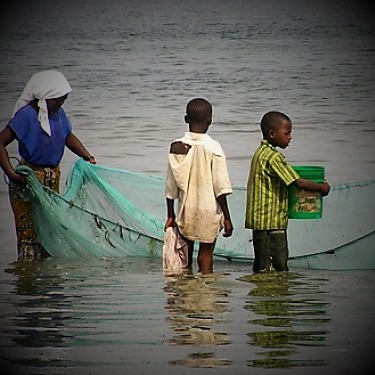
Climate change is causing droughts and food shortages and, as a result, is having a huge impact on people’s lives. For instance, in Malawi, it’s resulting in around 1.5 million girls as young as 13 facing the possibility of an early marriage because their families cannot feed them. In East Africa, nearly, 20 million people are at risk of dying from starvation, in part due to climate change-related drought. According to Famine Early Warning Systems Network, 76 million people across 45 countries will likely face food shortages and need food aid, partly due to issues connected to the changing climate. The problem is expected to worsen in 2018.
In contrast, less than a month ago, the United Nations held a Climate Change Conference (COP 23) where stakeholders shared flashy agendas, initiatives and achievements. Undoubtedly, governments, aid agencies, nongovernmental organizations, researchers, United Nations Food and Agriculture Organizations, and many stakeholders have stepped up, proposed and implemented initiatives to mitigate climate change. These range from scientifically proven climate smart agricultural practices, to improved drought tolerant seed varieties, to mobile apps that deliver timely weather and other climate related advisory services to farmers, to insurance schemes to help cover losses and damage that arise due to climate change, to the adoption of soil health building practices that enhance the ability of soils to sequester carbon.
Yet, while the impact of these initiatives has been recorded and documented, the situation keeps worsening.What’s clear is that there is still a disconnect between the BIG, BOLD, and AMBITIOUS agendas shared by stakeholders like the United Nations and national governments and the real grassroots initiatives that are being implemented on the ground.
The recurring question, then, becomes, how can we accelerate the adoption of some of the climate mitigating practices, innovations and solutions that work?
To effectively accelerate progress, we must know the challenges that hinder farmers from adopting these solutions. First, many lack the resources needed to use and implement these solutions, including land, financial capital and labor. And second, to those that have resources, they lack the knowledge and the required skills to correctly implement these game-changing climate innovations and practices.
To overcome these challenges, countries, national governments, researchers, the United Nations and all other stakeholders must step up their outreach efforts to ensure that farmers know what these novel solutions are and most importantly, they know how to effectively implement them. There is a need to support capacity-building like training and demonstrations to allow vulnerable countries to rapidly implement the solutions.
The CGIAR, for example, has developed innovative outreach strategies to help accelerate the adoption of climate-smart agricultural technologies and practices to farmers in East Africa. Through its Farms of the Future Approach, it links farmers to other farmers that are already experiencing climate change and are actively implementing climate smart technologies and practices. Such linkages create peer-peer learning. In addition, farmers that learn about these practices from their peers are further expected to communicate and disseminate the climate smart practices to their peers. Indeed, peer-to-peer learning, also known as social learning, has been proven to be an effective way to increase the adoption of new agricultural technologies. Such innovative approaches should continue to be developed.
Equally important is the need to strengthen African countries’ extension system because most of the new agricultural technologies are transferred to farmers through government-funded extension workers. In addition to extension workers, other channels including radio, television shows and cell phone apps should be used to help accelerate progress made.
In Tanzania for example, an innovative model is helping teach climate-smart agricultural practices with cell phones. Through this 3-2-1 service, that does not require the internet, farmers can retrieve information in their national language about climate smart practices via voice, short message service or web. The retrievable climate mitigation practices information was developed through a partnership involving Tanzania’s Ministry of Agriculture Livestock and Fisheries, national extension officers, farmers and the Catholic Relief Services.
Secondly, countries must create incentives to motivate local action and adoption of the innovations. An example of an incentive existing for farmers around the world are the carbon credit market implemented by the World Bank. Through it, farmers get paid when they implement soil health building practices that help sequester carbon.
Even though this is among the most promising practices, it is not a perfect solution. One of the potential downside to this effort is that most smallholder farmers do not have huge parcels of land to be able to implement these practices on a huge scale to guarantee enough cash from the carbon credits. According to a study that looked at six African agricultural carbon project case studies in several African countries including Kenya, Uganda and Ethiopia, carbon payments made to the farmers are very low compared to the total costs of implementing these climate smart practices and technologies.
Clearly, there are not enough incentives for farmers to adopt these practices. Therefore, there is room to innovate and come up with other smallholder farmer’s friendly financial incentives to aid in the rapid adoption of the climate smart technologies.
Climate change stakeholders must step up outreach efforts geared towards ensuring that many farmers adopt the available innovative climate smart practices. Farmers must also know what is available and be incentivized to implement the practices that work. Doing so will help bridge the disconnect between the bold ambitious agendas and the real grassroots initiatives that are being implemented on the ground to help farmers adapt to the inevitable changing climate. Lives are at stake.
By Esther Ngumbi, Source: allafrica.com
